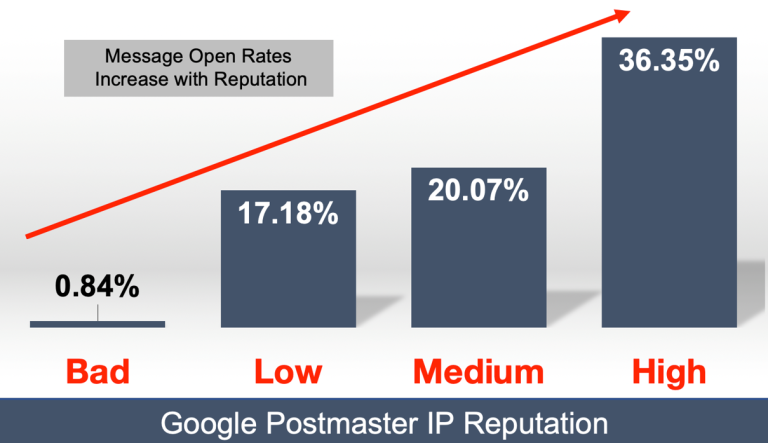gOOGLE dOMAIN rEPUTATION: iS IT IMPORTANT?
In the sprawling landscape of digital communication, email remains a cornerstone of personal and professional correspondence. However, as the volume of emails exchanged daily surges, the efficacy of email delivery becomes paramount. In this intricate web of transmission, one crucial factor stands out: Google domain reputation. Understanding its nuances is imperative for anyone seeking to optimize email deliverability and ensure that their messages reach their intended recipients. In this comprehensive guide, we delve into the depths of Google domain reputation, unraveling its intricacies and exploring its profound influence on email deliverability.

Unveiling Google Domain Reputation
Google, with its ubiquitous presence in the digital realm, exerts significant influence over email communication through its Gmail platform. Central to Gmail’s spam filtering mechanism is the concept of domain reputation. Put simply, domain reputation refers to the perceived trustworthiness and reliability of a domain in the eyes of email service providers, with Google being a prominent player in this domain.
Google assesses domain reputation based on various factors, including but not limited to:
1 - Sender History:
Google scrutinizes the sender’s track record, considering factors such as email volume, engagement metrics, and complaint rates. A consistent history of sending relevant, solicited emails to engaged recipients bolsters domain reputation.
2 - Content Quality:
The content of emails plays a pivotal role in determining domain reputation. Messages containing spammy or deceptive content are likely to be flagged, tarnishing the sender’s reputation.

3 - Authentication Protocols:
Implementation of authentication protocols like SPF (Sender Policy Framework), DKIM (DomainKeys Identified Mail), and DMARC (Domain-based Message Authentication, Reporting, and Conformance) adds layers of security and authenticity, enhancing domain reputation.
4 - User Engagement Metrics:
Google monitors recipient engagement metrics, such as open rates, click-through rates, and response rates, to gauge the relevance and value of emails. Higher engagement signals contribute positively to domain reputation.
The Ripple Effect: How Google Domain Reputation Affects Email Deliverability
The ramifications of Google domain reputation extend far beyond the confines of Gmail. Its influence permeates across the email ecosystem, shaping the deliverability of messages sent from a particular domain. Here’s how:
1 - Inbox Placement:
Email service providers, including Gmail, prioritize emails from domains with favorable reputations for inbox placement. A high domain reputation increases the likelihood of emails landing in recipients’ primary inboxes rather than being relegated to spam folders or promotions tabs.
2 - Spam Filtering:
Google employs sophisticated algorithms to filter out spam and malicious emails. Domains with poor reputations are more likely to trigger spam filters, leading to email rejection or placement in spam folders. Conversely, domains with stellar reputations enjoy preferential treatment, bypassing stringent filtering mechanisms.
3 - Delivery Speed:
Emails originating from domains with pristine reputations benefit from expedited delivery, as they are perceived as trustworthy and legitimate. Conversely, domains with dubious reputations may encounter delays or throttling in delivery, as email service providers exercise caution to mitigate potential risks.
4 - Enhanced Visibility:
A sterling domain reputation enhances the visibility and prominence of email campaigns. Messages from reputable domains are more likely to capture recipients’ attention and elicit responses, thereby amplifying the effectiveness of email marketing initiatives.
Nurturing a Positive Google Domain Reputation
The video below illustrates how to check your domain reputation in google as well as how to check your email deliverability with mail-tester.com. Finally, the video below illustratres how to add the TXT record in Namecheap domain DNS hosting records in order to check your domain reputation.
Given the pivotal role of domain reputation in email deliverability, nurturing a positive reputation emerges as a strategic imperative. Here are actionable strategies to bolster domain reputation and optimize email deliverability:
1 - Compliance with Best Practices:
Adhere to industry best practices for email marketing, including obtaining explicit consent from recipients, providing clear opt-out mechanisms, and refraining from deceptive or misleading practices. Compliance with regulatory requirements such as GDPR (General Data Protection Regulation) and CAN-SPAM Act is non-negotiable.

